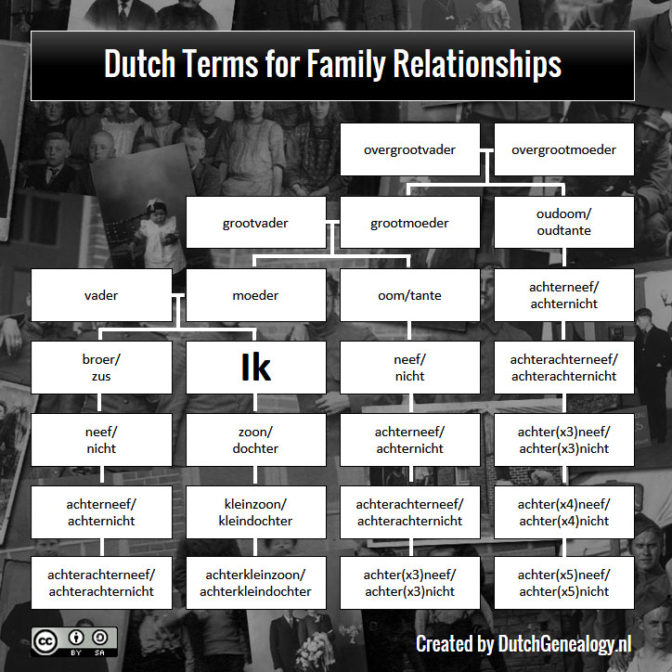This diagram shows you the Dutch terms for the most common family relationships.

In practice, we don’t use the more distant relationships than achterneef/achternicht; we just call them “verre neef” or “verre nicht” [distant cousin].
This diagram shows you the Dutch terms for the most common family relationships.

In practice, we don’t use the more distant relationships than achterneef/achternicht; we just call them “verre neef” or “verre nicht” [distant cousin].
Yvette Hoitink, MLitt, CG®, QG™ is a professional genealogist, writer, and lecturer in the Netherlands. She has a Master of Letters in Family and Local History from the University of Dundee, and holds the Certification of Genealogist and Qualified Genealogist credentials. Yvette served on the Board of Directors of the Association of Professional Genealogists and won excellence awards for her articles in the National Genealogical Society Quarterly and the Association of Professional Genealogists Quarterly. Yvette has been doing genealogy for over 30 years. She helps people from across the world find their ancestors from the Netherlands and its former colonies, including New Netherland. Read about Yvette's professional genealogy services.

Yvette Hoitink, MLitt, CG®, QG™ is a professional genealogist, writer, and lecturer from the Netherlands who helps people find their ancestors from the Netherlands and its former colonies, including New Netherland. She has a Master of Letters in Family and Local History from the University of Dundee, and holds the Certified Genealogist and Qualified Genealogist credentials.
Do you need a genealogist in the Netherlands to help you with your research?
Please read what Yvette can do for you.
Sign up to receive weekly email updates with news about Dutch Genealogy!
This Dutch Genealogy webinar gives you a great introduction to researching your Dutch ancestors. Requires a Legacy FamilyTreeWebinar subscription to watch. [Affiliate link]
That is great to see! Thanks for posting this.
Cool. So neef/nicht are used for both cousin and for nephew/niece?
Yes, which can be very confusing! But at least we’ll know if it’s a male or female cousin 🙂
What could this mean? Found in a will, the handwriting seems to read: “Haar moij” in relation to a younger woman and older woman who don’t share the last name?
A moij is another word for aunt.